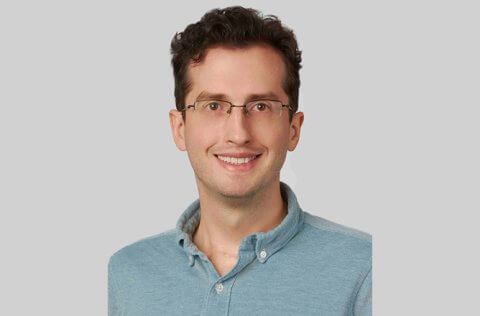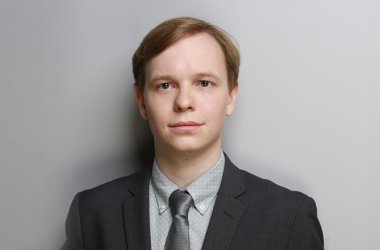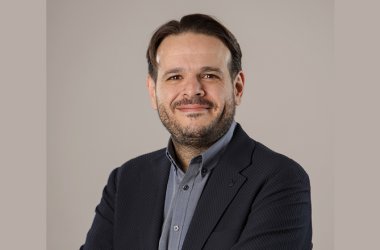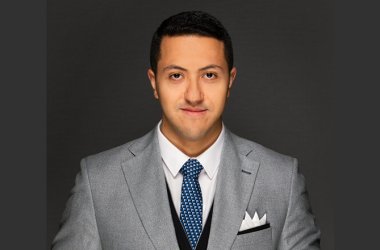CNME Editor Mark Forker sat down with Stefan Leichenauer, VP of Engineering at SandboxAQ, to find out why more and more industries are increasingly opting to adopt Large Quantitative Models (LQMs) to solve their complex challenges, as opposed to LLMs. Leichenauer also outlined that ultimately their mission is to not just create technology, but instead to have a positive impact on society.

Stefan Leichenauer is a man on a mission.
He is driven by the fact that he works for a company that is committed to making the world a better place.
That company is SandboxAQ, a B2B company that delivers AI solutions that addresses some of the world’s greatest challenges.
SandboxAQ was born out of Alphabet Inc. as an independent capital-backed company in 2022.
Over the last number of years, it has grown exponentially across multiple global markets, and has a major partnership here in the Middle East region with Aramco.
Leichenauer spoke to CNME, about why the company wants to deliver technologies that have a positive impact on society, and the critical role played by LQMs in enabling the transformation pf industries such as the Oil & Gas sector.
In a recent op-ed, the VP of Engineering at SandboxAQ made the case for enterprises to shift their focus away from LLMs and to look at the LQMs to foster real change across their organisation.
According to Leichenauer, LLMs have limitations, and in order to solve the really complex challenges facing the world then businesses need to start looking at LQMs.
“Firstly, let me say that I think LLMs are fantastic, and we are not working to get rid of them. However, LLMs can’t do everything by themselves, and I think that’s the point that I am making, and I think more and more people are starting to realise that LLMs have their limitations. If you look at the latest LLMs that have been released over the last 3 years, then it seems like every release has a new set of capabilities that can do so much more, but we have sort of hit a ceiling of late. If you examine the latest releases of Llama 4 and GPT4.5 they are only incrementally better than what has come previously. So, I think there has been a realisation that LLMs as a capability are great, processing text and generating images then it is fantastic, but there is a whole set of capabilities that LLMs are just not going to get to by themselves,” said Leichenauer.
The capabilities that LLMs are not going to be able to get to by themselves is associated with quantitative reasoning, and this is where LQMs come to the fore.
“LQMs is designed to model the physical with chemistry, physics, and medicine, and is essentially focused on doing things that has absolutely nothing to do with language-based content. You need other tools in the tool box, and that’s where LQMs come in. LQMs are basically providing those other tools in toolbox and they compliment the capabilities provided by LLMs,” said Leichenauer.
In his op-ed, Leichenauer also claimed that when precision is paramount then LQMs are indispensable, and said momentum was beginning to swing in favour of LQMs.
“We’re now seeing more proof points that LQMs. I think in the past people would have deployed LLMs on to any given problem to see what works, and what doesn’t, and I think everyone has been doing proof of concept trials with LLMs, but they’ve fallen short for a couple of reasons. As I stated earlier, in some areas they are fantastic, but in other areas they have fallen short. One of the reasons for this is the fact that LLMs are very non-transparent in terms of their reasoning. LLMs will give you an answer, but why is it true? And the LLM could be hallucinating, and we know that’s been a big problem in some areas. Hallucinations are fine when it comes to generating an image, maybe it has the wrong number of fingers, but when it comes to creating a new molecule for Aramco, that is designed to making their processing plants more efficient, then you can’t get that wrong because that’s going to cost you a billion dollars. You need your answer to be correct, you need it to be grounded in real understanding of the problem, and LQMs can provide that verifiability and transparency,” said Leichenauer.
As aforementioned above, SandboxAQ have enjoyed great success since spinning out of Alphabet Inc. in 2022, and are working with some of the biggest companies in the Middle East, including Aramco, who are the biggest integrated energy and chemicals company in the world.
He spoke about their partnership, and again reiterated their mission which is to build purposeful technology designed to improve society.
“Our goal at Sandbox at the end of the day is not to create technology, of course we love to create technology, but we are doing it for a purpose. Ultimately, our goal is to have a positive impact on the world, and it just so happens that LQM technology is a great way to have a positive impact. The impact areas that we care about the most such as the medicine, pharmaceuticals, medical devices and GPS free navigation is something that we are very passionate about. These are all powered by LQMs. In terms of our collaboration with Aramco, the oil & gas industry is a really important industry in the world. However, we are all acutely aware that as we move forward, we need to be better about being environmentally friendly, and more efficient with our energy and more sustainable. We need to always be looking at better techniques, and Aramco is a real leader and pioneer when it comes to these sort of techniques,” said Leichenauer.
He went into more detail in relation to how LQM technology is enabling Aramco to transform, and how the technology is helping the global energy incumbent to be more sustainable and efficient.
“Aramco is not an AI company, they are an oil & gas company, so we are here to help our partners like Aramco to advance their operations to be able to do things in a much better way. SandboxAQ provides software tools, AI models and the LQMs that really help them to transform the way they operate their business. What we’re doing with Aramco specifically is partnering with them to look closer at the oil & gas processing facilities. Ultimately, a lot of what is happening there is you’ve essentially got liquids and gases flowing through pipes and going through various kinds of processes, refineries and machines. However, in order to make those processes more efficient, one way to make them more efficient is to model them computationally better,” said Leichenauer.
Leichenauer conceded that these processes are complex, but insisted that in order to make them more efficient and sustainable then companies like Aramco had to implement LQM technologies.
“It’s a complex physical process, and if you want to make your plants more efficient, and reduce emissions and waste then modelling that process computationally allows you to make tweaks and changes virtually to enable you to implement them in real-life. Modelling all of those processes computationally is something that our software is helping Aramco with,” said Leichenauer.
Leichenauer is delighted at the progress SandboxAQ has made with Aramco since their collaboration started, and believes that by 2030, it will fundamentally be a completely different business.
“The part that Sandbox has control over, and the computational modelling that enables these kinds of changes, the good news is, well from our perspective anyway is relatively simply compared to actually implementing these things physically. We have been working with Aramco for several months now, and we’ve already achieved significant milestones with our modelling. The LQMs that can do that sort of modelling and give you the answers and the playbook that what you need to do to make the changes those exist, and in a matter of months we have made huge progress on that. If I had to speculate a little bit then I’d guess that in the next 5 years we’ll see a lot more changes coming through and being implemented. It may take longer to become 100% sustainable and 100% green, but in the oil and gas industry and other industries we can affect real changes and see real progress in a sort of 5-year timeline. By 2030 or so, a lot of the work we are doing today will have real tangible impact by then,” said Leichenauer.
Another industry that SandboxAQ is looking to transform in order to ensure they are having a meaningful impact on society is the healthcare industry.
“The healthcare sector is a major industry for us. It is a major source of grand challenges for the world, but we have seen a lot of progress in the last years in terms of how technology is being used to transform healthcare. When we are talking about real positive impact on the world then there’s almost no better place to have that impact than in healthcare. Within healthcare, there is obviously the pharmaceutical industry, and there’s always a lot to do in that space, and in terms of medical diagnostics that is a space that also can be transformed. The MRI machine is an amazing machine, it transformed medicine when it was invented several decades ago, but it is big, it is expensive, and it’s clunky, and it takes a lot of expertise to use it. The next-generation of medical diagnostic devices can bring the kind of transformative impact of the MRI machine, but in a form factor that is more like an ultrasound machine, where it can something that can be much smaller and can be in every hospital emergency room. That kind of technology is coming, and some of that is what we are working on and using LQMs to enable,” said Leichenauer.
Leichenauer outlined that SandboxAQ is working on a diagnostic designed to tackle the issue of heart disease.
“We’re working on a device right now using LQMs that is specifically for diagnosing heart disease, and various kinds of heart disease in an emergency room setting in a way that you could actually apply it to every patient that walks in complaining of heart problems, or persistent heart pain. One of the first things that you do is take five minutes to give them a scan using the machine, and that really improves the care of the patient, and heart disease is one of the biggest killers in the world, so this is a truly transformative device. At the minute, we have a prototype device being tested in hospitals right now, and within a couple of years I’d expect this device to be used on a everyday basis in hospitals. Early indications of the prototype is that we are on the right track, and appear to be doing a good job. However, you have to prove you’re doing a good job and pass regulations and so on before you can actually go to market with such a device, but the technology is there and we are actively working on it,” said Leichenauer.





